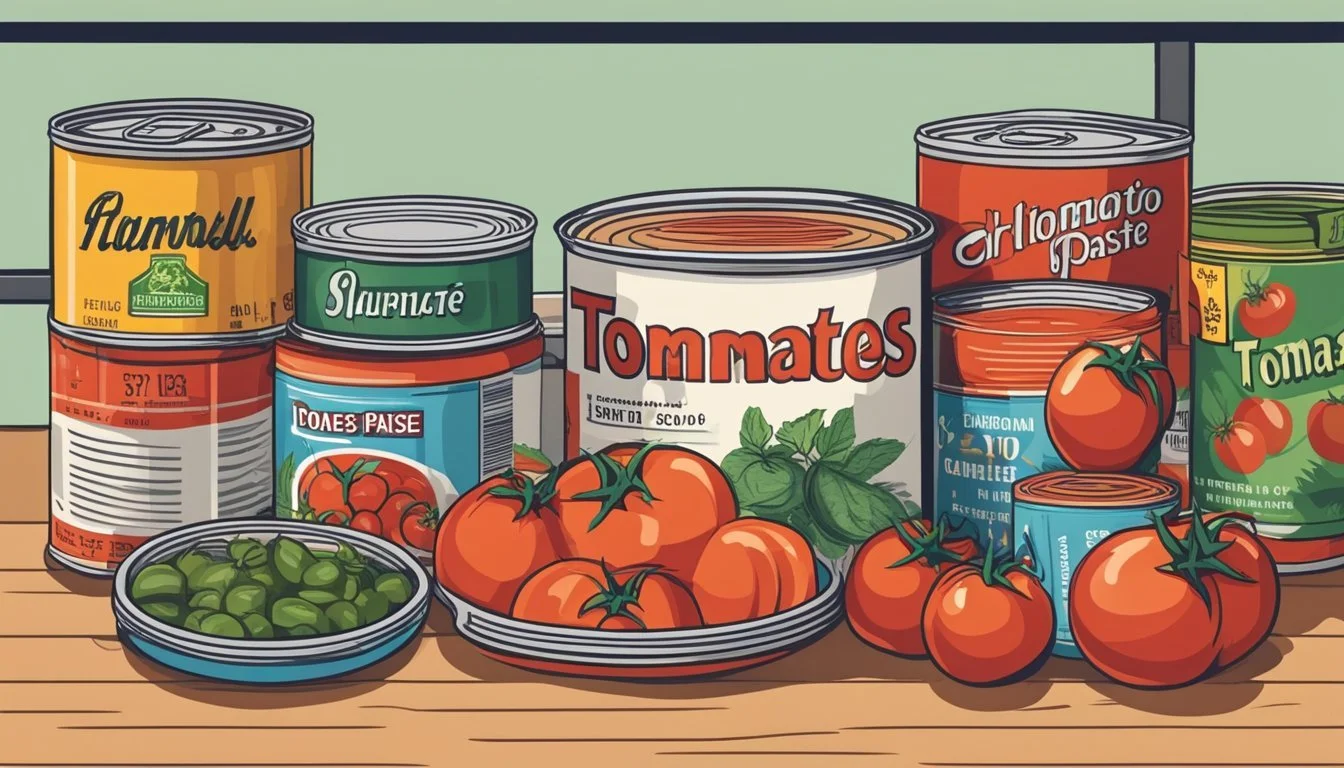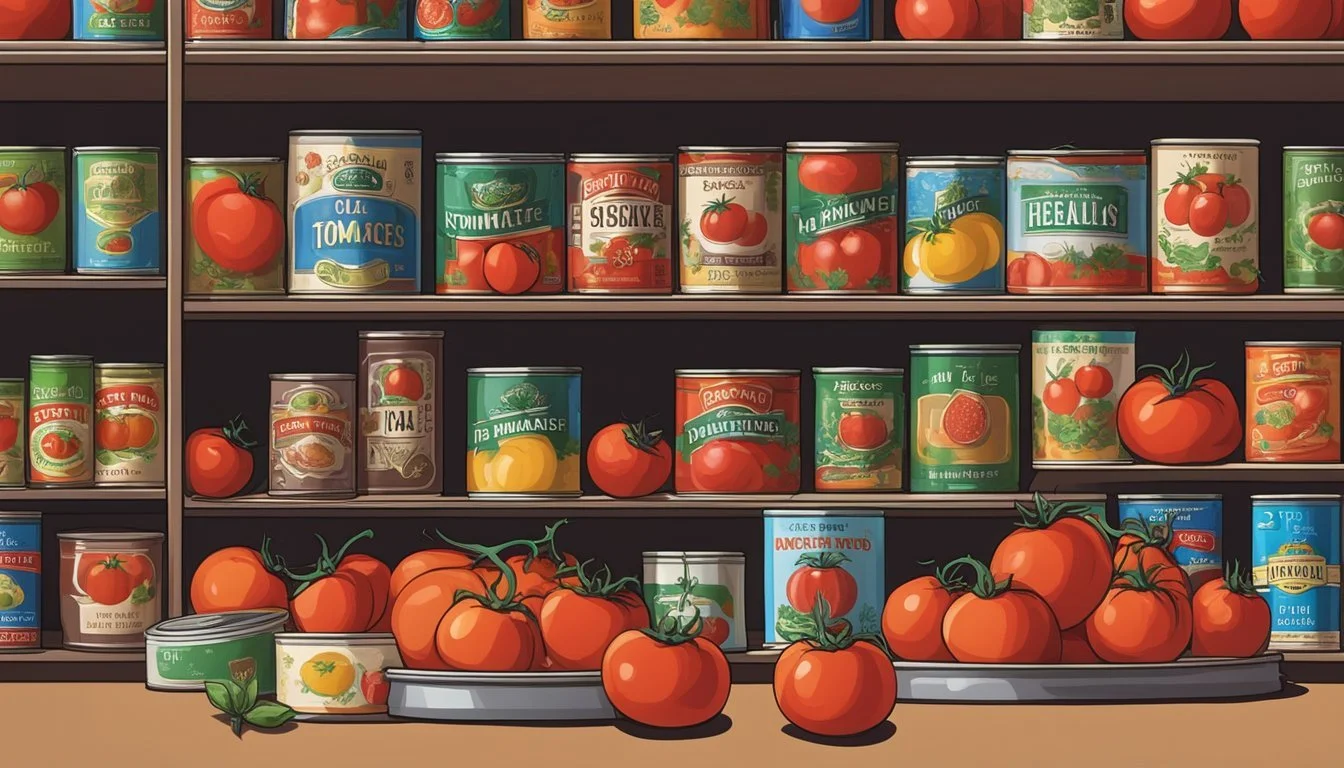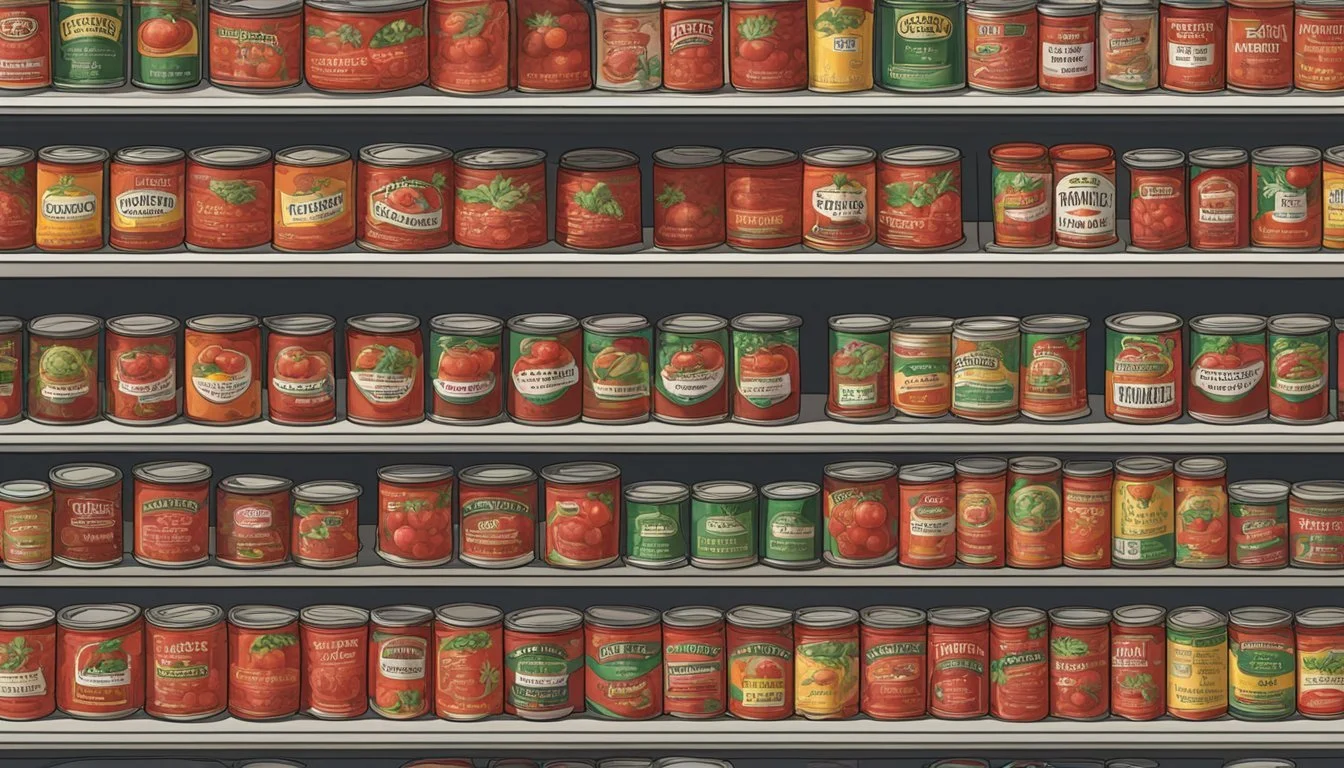Do Canned Tomatoes (Paste) Spoil?
Shelf Life and Storage Tips
Canned tomato paste is a pantry staple that many home cooks rely on for its rich flavor and versatility. A common question concerns whether canned tomatoes, particularly paste, spoil over time. Yes, canned tomato paste can spoil, but when stored properly, it can have an extended shelf life.
Unopened canned tomato paste can be safely stored in a cool, dry place and can maintain its quality for 12 to 18 months or even longer. However, it is important to check for signs of spoilage like off odors, visible mold, or any damage to the can, such as leaks, rust, or bulging.
Once opened, the shelf life of tomato paste decreases significantly. It can last up to 5-7 days in the fridge if stored properly. Always ensure it's kept in an airtight container to prevent contamination and spoilage.
Understanding Canned Tomatoes
Canned tomatoes come in various forms and are widely used due to their convenience and long shelf life. This section explores the essential aspects of canned tomatoes, from the basics to the different types available on the market.
The Basics of Canned Tomatoes
Canned tomatoes are preserved by sealing them in airtight containers and heating them to destroy bacteria and enzymes. This process ensures the tomatoes stay safe to consume over extended periods. They are typically stored unopened for 18 to 24 months, and even longer if the can's seal remains intact and undamaged.
Tomatoes used in canning are usually harvested at peak ripeness. Key varieties include Roma and San Marzano tomatoes, known for their rich flavor profiles. The canning industry often employs paste tomatoes like Amish Paste due to their lower moisture content and concentrated flavor, making them ideal for creating products like tomato paste and puree.
Different Types of Tomato Products
Canned tomatoes come in various forms, tailored to different culinary needs. Whole tomatoes are peeled and canned without much processing, maintaining their shape and texture. Crushed tomatoes consist of diced tomatoes mixed with tomato puree, providing a thicker consistency suitable for sauces. Stewed tomatoes are often cooked and canned with additional seasonings like herbs and spices.
Tomato paste is a highly concentrated product made by cooking tomatoes for a prolonged time, reducing them to a thick, rich paste. Tomato sauce typically contains additional ingredients such as onions, garlic, and various spices, delivering a ready-to-use sauce. Puree is smoother than crushed tomatoes but less concentrated than paste, making it versatile in multiple recipes.
Each type serves a specific purpose in cooking, whether enhancing the flavor of stews, forming the base of sauces, or contributing to complex dishes like marinara and bolognese.
Canning Process and Ingredients
Canning tomato paste involves specific steps and ingredients to ensure safety and longevity. Using fresh tomatoes and maintaining proper acidity levels is crucial.
Essential Ingredients for Canning Tomatoes
Fresh Tomatoes: Start with ripe, high-quality tomatoes for the best result. Firm tomatoes are preferred for their flesh and rich flavor.
Citric Acid or Bottled Lemon Juice: Adding citric acid or bottled lemon juice is essential to achieve the correct acidity. This prevents spoilage and ensures safety.
Canning or Pickling Salt: Use canning salt to enhance flavor and preserve the paste without affecting the natural taste of tomatoes.
Garlic and Bay Leaves: Optional ingredients like garlic cloves and bay leaves add depth to the flavor profile.
Step-by-Step Guide to Home Canning
Preparation: Wash and rinse half-pint canning jars and keep them hot until ready to fill. Prepare lids and rings as per manufacturer instructions.
Cooking: Rinse tomatoes thoroughly under running water, remove cores, chop into ½- to ¾-inch pieces, and place in a stockpot. Bring to a boil, then simmer until reduced by half (approximately 2.5 hours).
Acidification: Before filling jars, add 2 tablespoons of bottled lemon juice or ½ teaspoon citric acid per quart jar (use half for pint jars).
Filling: Ladle the hot tomato paste into hot jars, leaving 1/2 inch headspace. Remove air bubbles with an air bubble remover tool.
Sealing: Wipe rims with a clean paper towel; place lids and tighten screw bands until fingertip tight.
Processing: Process jars in a boiling-water canner or pressure canner according to recommended times for your altitude.
Utilizing these precise steps and ingredients will help preserve homemade tomato paste effectively.
Preservation and Safety
Canned tomato paste and tomatoes require proper storage to ensure safety and longevity. Understanding the right preservation techniques and using tested recipes are vital for maintaining product quality.
Ensuring Safety in Canned Tomatoes
Ensuring the safety of canned tomatoes involves several crucial steps. First, the tomatoes must be stored in a cool, dry place away from direct sunlight. Optimal storage temperatures are around 68°F (20°C). Keeping the cans in these conditions significantly extends their shelf life.
Inspect the cans before use. Discard any cans that are leaking, rusting, bulging, or severely dented. These are common signs that the tomato paste may be unsafe for consumption.
Adherence to proper canning techniques is essential. For home canning, a pressure canner is recommended due to the acidic nature of tomatoes. This method ensures all bacteria are killed, preventing spoilage and health risks.
Tested Recipes and Best Practices
Using tested recipes is vital for ensuring the quality and safety of canned tomato paste. These recipes provide specific processing times and headspace requirements. For example, a typical recipe might call for a quarter-inch headspace and 45 minutes in a boiling water bath canner.
Storing opened tomato paste properly is also important. Transfer any remaining paste into an airtight container and refrigerate. A thin layer of oil on top of the paste can create a seal, reducing air exposure and extending freshness.
For long-term storage, consider freezing the leftover paste. Spoon the paste into an ice cube tray, freeze until solid, then transfer to a freezer bag. This method allows for easy portioning and retains the paste's flavor and quality.
Spoilage and Shelf Life
Tomato paste and canned tomatoes have varying longevity depending on their storage conditions. Properly storing these items can help extend their shelf life, while being aware of spoilage signs can prevent consumption of contaminated products.
Signs of Spoilage in Tomato Paste and Canned Tomatoes
Identifying spoilage in tomato paste and canned tomatoes is crucial. Mold growth and an off-smell are primary indicators of spoilage. Discoloration and changes in texture also signal that the product is no longer safe. When sealed properly, tomato paste typically lasts 18-24 months unopened.
Once opened, it needs refrigeration and can last 5-7 days. For canned tomatoes, any seal failure or loss of liquid can be signs of compromised safety, and the product should be discarded. Detailed inspection before use is recommended to prevent consuming spoiled food.
Proper Storage to Extend Shelf Life
Proper storage is key to maximizing the shelf life of tomato paste and canned tomatoes. Unopened cans should be kept in a cool, dry place. After opening, transfer the paste to an airtight container and store it in the refrigerator. Freezing tomato paste can further extend its usability, with options like ice cube trays or muffin trays offering portioned storage solutions.
Pressure canning is an effective method for home preservation, ensuring that jars are properly sealed to prevent contaminations. Head space should be maintained to allow for proper sealing and prevent fermentation. Proper storage techniques not only preserve the quality but also prevent enzyme activity that leads to spoilage.
Enhancing Tomato Products
Tomato products, including paste and sauces, can be transformed to create rich flavors and integrated into a variety of dishes. Below are key methods and recipes that utilize these versatile ingredients to their fullest potential.
Creating Rich and Flavorful Tomato Paste and Sauce
Homemade tomato paste and sauce start with simmering tomatoes to reduce moisture content. This low moisture process intensifies flavors. Using a food mill, blender, or food processor helps achieve a smooth consistency by removing seeds and skins.
To enhance depth of flavor, slowly cook tomatoes with aromatics like garlic and onion in a crockpot. Incorporating stock or red wine can also add complexity. For thicker sauces, reduce the amount of water used during cooking.
Incorporating Tomatoes into Various Dishes
Tomato paste and sauce can be adapted for numerous recipes. For a hearty spaghetti sauce, combine tomato products with ground beef, fresh herbs, and a splash of red wine, allowing it to simmer for hours.
Creating a robust pizza sauce involves blending tomato paste with olive oil, garlic, and oregano. For a quick meal, use tomato sauce as a base for soups or stews, adding depth of flavor and richness.
By adjusting the ingredients and cooking methods, tomatoes can enhance an array of dishes with both thick and rich elements.
Alternative Tomato Preservation Methods
There are several methods for preserving tomatoes that ensure their longevity and maintain their flavor. Techniques such as freezing and making pastes, preserves, jams, and jellies cater to various culinary needs.
Freezing Tomato Paste and Sauces
Freezing is an effective way to preserve tomato paste and sauces. Begin by preparing your tomato paste or preferred tomato sauce, ensuring it’s cooked and seasoned to your taste. Let the mixture cool completely.
Next, use airtight containers or freezer-safe bags to store the paste or sauce. Lay bags flat to save space. Label each container or bag with the date and contents for easy identification. Frozen tomato paste can last up to six months, while sauces might maintain their quality for about 4-6 months.
Tip: Ice cube trays can be used to freeze small portions of tomato paste. Once frozen, transfer the cubes to larger bags or containers.
Freezing preserves the nutritional value and flavor of the tomatoes, making it a practical method for long-term storage.







